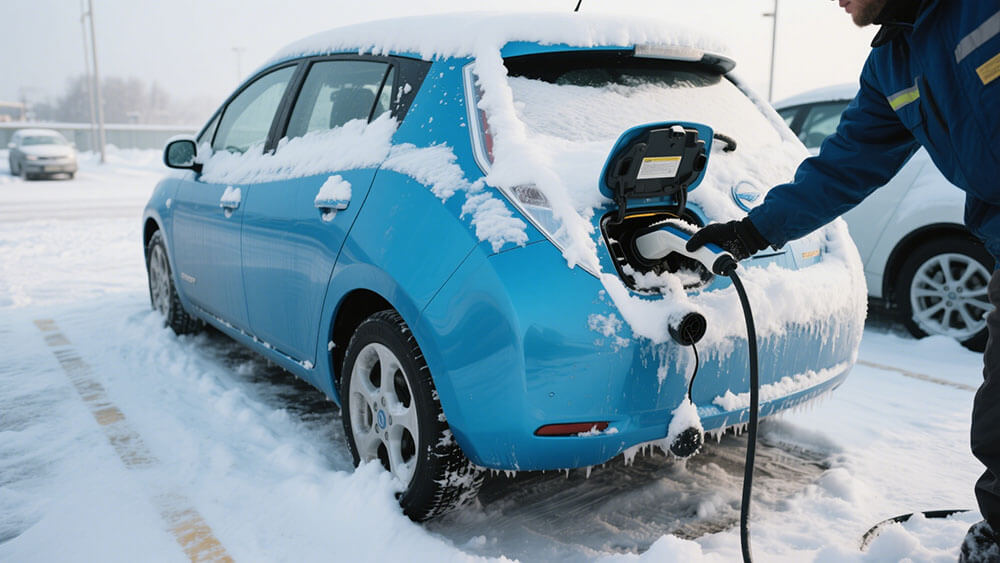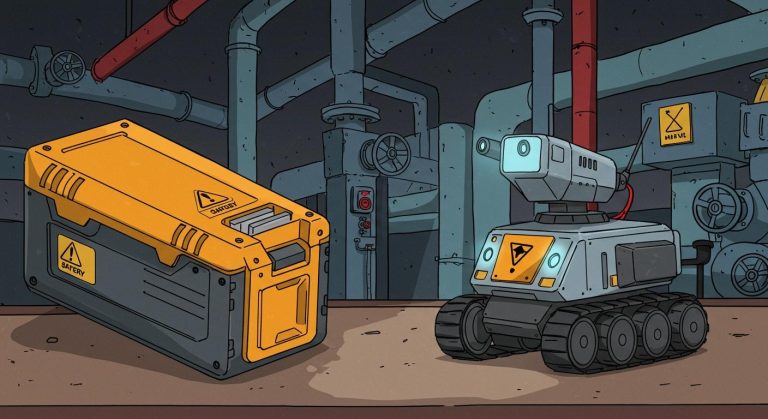
Operating a LiPo battery in low temperature presents significant challenges. At -20°C, these batteries may lose up to 50% of their performance, impacting applications such as electric vehicles and renewable energy systems. Additionally, over 40% of the market demand for low-temperature batteries comes from EVs and hybrid EVs, underscoring the need for reliable solutions. You must rely on innovative designs to ensure optimal performance and safety in freezing conditions.
Explore custom solutions for your battery needs.
Key Takeaways
LiPo batteries may lose half their power in freezing weather. Use better materials and designs to work well in the cold.
Use smart systems to check battery temperature and charge safely in the cold. This helps batteries last longer and work better.
Try new electrolyte mixes and electrode materials to make batteries work better in the cold. Create special solutions for your needs.
Part 1: Challenges of LiPo Battery in Low Temperature

1.1 Reduced Capacity and Energy Output
When exposed to freezing temperatures, LiPo batteries experience a significant drop in capacity and energy output. This occurs because the electrolyte inside the battery thickens, reducing the mobility of lithium ions. As a result, the battery’s ability to deliver power diminishes. For instance, lithium-ion batteries, which typically operate at 95-98% of their rated capacity, can lose 20-30% of their capacity in extreme cold. This reduction severely impacts low-temperature applications, such as drones, electric vehicles, and medical devices, where consistent energy output is critical.
To mitigate this issue, you can explore advanced materials and designs that enhance low-temperature performance. For example, using low-viscosity electrolytes or incorporating additives can improve ion conductivity, ensuring better battery performance even in sub-zero conditions.
1.2 Increased Internal Resistance
Cold weather increases the internal resistance of lithium-ion batteries, making it harder for them to deliver power efficiently. This resistance arises from the slower movement of ions and electrons within the battery. Higher resistance not only reduces discharging performance but also causes energy losses in the form of heat. For devices requiring high power output, such as industrial equipment or robotics, this can lead to operational inefficiencies.
To address this challenge, manufacturers are developing innovative electrode materials with higher conductivity. For instance, using carbon nanotubes or graphene coatings on electrodes can reduce resistance and enhance the battery’s low-temperature performance. These advancements ensure that your devices maintain optimal functionality, even in freezing environments.
1.3 Degradation of Battery Components
Prolonged exposure to cold temperatures accelerates the degradation of LiPo battery components. The solid electrolyte interphase (SEI) layer, which protects the anode, becomes unstable, leading to capacity loss and reduced cycle life. Additionally, the cathode materials may suffer from structural changes, further impacting the battery’s energy density.
Key findings on degradation include:
Cold temperatures can reduce the rated battery capacity by 20-30%.
Lithium-ion batteries should ideally operate at 95-98% of their rated capacity.
To combat degradation, you can adopt batteries with advanced chemistries, such as LiFePO4 or NMC, which offer better stability in low temperatures. Additionally, integrating thermal management systems can help maintain the battery’s temperature within an optimal range, preventing long-term damage.
1.4 Safety Risks in Cold Weather Operations
Operating LiPo batteries in freezing conditions poses significant safety risks. Charging performance becomes unpredictable at sub-zero temperatures, potentially leading to internal short circuits or thermal runaway. Reports indicate that charging lithium-ion batteries in such conditions can cause stress on the battery, increasing the likelihood of failure.
To ensure safety, you should implement smart battery management systems (BMS) that monitor temperature and adjust charging parameters accordingly. Pre-heating technologies, such as integrated heating films, can also bring the battery to a safe operating temperature before charging. These measures not only enhance safety but also extend the lifespan of your batteries in cold environments.
Tip: Always avoid charging LiPo batteries below 0°C unless the battery is specifically designed for such conditions. This precaution minimizes risks and ensures reliable operation. Explore Large Power’s low temperature battery solutions.
Part 2: Innovations Enhancing Low-Temperature Performance

2.1 Advanced Electrolyte Formulations
Innovative electrolyte formulations play a pivotal role in improving the low-temperature performance of lithium-ion batteries. These formulations address the challenges posed by reduced ionic conductivity and increased viscosity in freezing conditions. By optimizing the composition of electrolytes, you can achieve better ion mobility and enhance battery performance in sub-zero environments.
Key advancements in electrolyte formulations:
Low-viscosity solvents: Using esters as solvents reduces the melting point and viscosity, enabling higher discharge capacity at low temperatures.
High salt concentration: Increasing salt concentration minimizes salt-solvent coordination, forming a more effective solid electrolyte interface (SEI). This improves the stability and efficiency of lithium-ion batteries during charging and discharging cycles.
Fluorinated additives: Incorporating fluorinated compounds enhances the thermal stability of electrolytes, ensuring consistent performance in extreme cold.
Performance comparison of electrolyte types:
Electrolyte Type | Performance Metric | Temperature (°C) | Capacity Improvement |
|---|---|---|---|
MP-based | Highest capacity | -40 | Significant |
Isoxazole | Improved performance | Low temperatures | Notable |
These advancements allow lithium-ion batteries to maintain higher energy density and reliable charging performance, even in demanding low-temperature applications.
Tip: Consider custom electrolyte solutions tailored to your specific needs. Explore custom battery solutions for optimized performance.
2.2 Improved Electrode Materials
Electrode materials significantly influence the discharging performance and overall efficiency of lithium-ion batteries in cold weather. Traditional graphite anodes and standard cathode materials often struggle to maintain stability and conductivity at low temperatures. However, recent innovations in electrode design have addressed these limitations.
Cutting-edge electrode materials:
Hard carbon anodes: Hard carbon offers better low-temperature performance compared to graphite. It reduces the risk of lithium dendrite formation and expands the operational temperature range.
Titanium-based anodes (LTO): Lithium titanate (LTO) anodes exhibit exceptional stability and can operate efficiently at temperatures as low as -30°C. They also provide extended cycle life, with up to 20,000 cycles.
Nanostructured cathodes: Nanotechnology enhances the conductivity and reaction kinetics of cathode materials like LiFePO4 and NMC. These materials deliver improved energy density and faster charge-discharge rates in cold environments.
Benefits of advanced electrode materials:
Reduced internal resistance for higher efficiency.
Enhanced structural stability to prevent degradation.
Extended cycle life and consistent performance in low-temperature applications.
By integrating these advanced materials, you can ensure that your lithium-ion batteries perform reliably in extreme cold, whether for industrial equipment, robotics, or consumer electronics.
Note: For applications requiring robust low-temperature performance, consider batteries with LiFePO4 or NMC chemistries. Learn more about LiFePO4 batteries.
Part 3: Technologies Addressing Cold Weather Challenges

3.1 Solid-State Electrolytes
Solid-state electrolytes represent a transformative innovation in lithium-ion batteries, particularly for low-temperature performance. Unlike traditional liquid electrolytes, solid-state alternatives use solid materials to facilitate ion transport. These materials exhibit higher thermal stability and lower flammability, making them safer and more reliable in extreme conditions.
Solid-state batteries excel in low-temperature applications due to their ability to maintain ionic conductivity at sub-zero temperatures. For instance, sulfide-based electrolytes can achieve ionic conductivities of up to 10⁻³ S/cm at -30°C. This ensures consistent discharging performance and energy density, even in freezing environments. Additionally, solid-state designs eliminate the risk of electrolyte freezing, a common issue with conventional lithium-ion batteries.
Note: While solid-state technology shows immense promise, challenges such as interface resistance and scalability remain. However, ongoing research aims to overcome these barriers, paving the way for widespread adoption.
Explore more about Solid-State Batteries.
3.2 Nanotechnology in Electrode Design
Nanotechnology has revolutionized electrode design, significantly enhancing the low-temperature performance of lithium-ion batteries. By manipulating materials at the nanoscale, manufacturers can improve conductivity, reaction kinetics, and structural stability.
Key advancements in nanotechnology:
Nanostructured cathodes: Materials like LiFePO4 and NMC benefit from nanostructuring, which increases surface area and accelerates ion diffusion. This results in faster charging performance and higher energy density.
Carbon nanotube coatings: Applying carbon nanotubes to electrodes reduces internal resistance, ensuring efficient discharging performance in cold environments.
Titanium-based anodes (LTO): Lithium titanate (LTO) anodes, enhanced with nanotechnology, offer exceptional cycle life (up to 20,000 cycles) and operate efficiently at temperatures as low as -30°C.
These innovations make lithium-ion batteries more suitable for industrial and consumer electronics applications in extreme climates.
3.3 Smart Battery Management Systems
Smart battery management systems (BMS) play a critical role in addressing cold weather challenges. These systems monitor and regulate battery performance, ensuring optimal operation in low-temperature environments.
Features of advanced BMS:
Thermal management systems: These systems maintain battery temperatures between 25 to 35°C (77 to 95°F) for optimal performance. In cold weather, they heat the coolant circulating through the battery pack to prevent performance degradation.
Temperature sensors: Sensors activate protection circuits when temperatures drop too low, preventing lithium plating and ensuring safe charging performance.
Energy-efficient design: Modern BMS, such as Modine’s EVantage system, minimize power draw while maintaining necessary temperature control.
Tip: Integrating a smart BMS into your lithium-ion battery system can significantly enhance its reliability and lifespan in low-temperature applications.
For custom solutions tailored to your needs, visit Large Power.
Part 4: Future Outlook for LiPo Battery in Low Temperature

4.1 Emerging Research in Battery Chemistry
Emerging research in battery chemistry is paving the way for lithium-ion batteries to perform better in cold environments. Scientists are exploring all-solid-state batteries as a promising solution. These batteries are less sensitive to temperature fluctuations, making them ideal for extreme conditions. In contrast, traditional lithium-ion batteries experience a significant reduction in energy density, with a 66% drop at -20°C and 95% at -40°C.
Study Focus | Findings | Temperature Impact |
|---|---|---|
All-solid-state batteries | Promising solution for cold conditions | Insensitive to temperature changes |
Lithium-ion batteries | Energy density reduction at low temps | 66% at -20°C, 5% at -40°C |
Advancements in battery chemistry, such as the use of fluorinated additives and high-concentration electrolytes, are also improving charging performance. These innovations enhance the stability of lithium-ion batteries, ensuring reliable operation in freezing temperatures.
4.2 Breakthroughs in Thermal Management Systems
Thermal management systems are critical for maintaining low-temperature performance in lithium-ion batteries. Recent breakthroughs include phase change materials (PCM) and liquid cooling technologies. These systems outperform traditional air cooling methods by providing better temperature control and extending battery lifespan.
Evidence Description | Key Findings |
|---|---|
PCM and liquid cooling technologies | Significant improvements in temperature control |
Hybrid cooling system performance | Enhanced efficiency and reduced battery spacing |
Wind speed impact on cooling systems | Lower operating temperatures with higher airflow |
Hybrid cooling systems, which combine multiple technologies, offer even greater efficiency. By reducing temperature differences within the battery pack, these systems improve both charging performance and discharging performance.
4.3 Industry Collaboration for Innovation
Collaboration among industry leaders is essential for driving innovation in lithium-ion battery technology. Partnerships between battery manufacturers, research institutions, and automotive companies are accelerating the development of advanced materials and thermal management solutions. These collaborations aim to create batteries that deliver consistent low-temperature performance while meeting the growing demand for sustainable energy solutions.
By working together, industries can overcome challenges such as scalability and cost, ensuring that lithium-ion batteries remain a viable option for cold-weather applications. This collective effort will shape the future of battery performance, making it more reliable and efficient in extreme conditions.
Overcoming the challenges of LiPo batteries in extreme cold requires innovative solutions. Advanced materials, smart management systems, and thermal technologies are transforming performance. Ongoing research into solid-state designs and nanotechnology promises breakthroughs. By adopting these advancements, industries can ensure reliable energy solutions. Explore custom battery solutions to meet your specific needs.
FAQ
1. How can you safely charge LiPo batteries in freezing temperatures?
Tip: Preheat the battery to above 0°C using integrated heating systems or external warmers. Avoid charging below freezing to prevent permanent damage.
2. What materials improve LiPo battery performance in cold weather?
Hard carbon anodes and titanium-based materials (LTO) enhance stability. Nanostructured cathodes like LiFePO4 improve conductivity and energy density in sub-zero conditions.
3. Are solid-state batteries suitable for extreme cold?
Solid-state batteries maintain ionic conductivity at low temperatures. They offer better safety and reliability but require further research to address scalability challenges.






